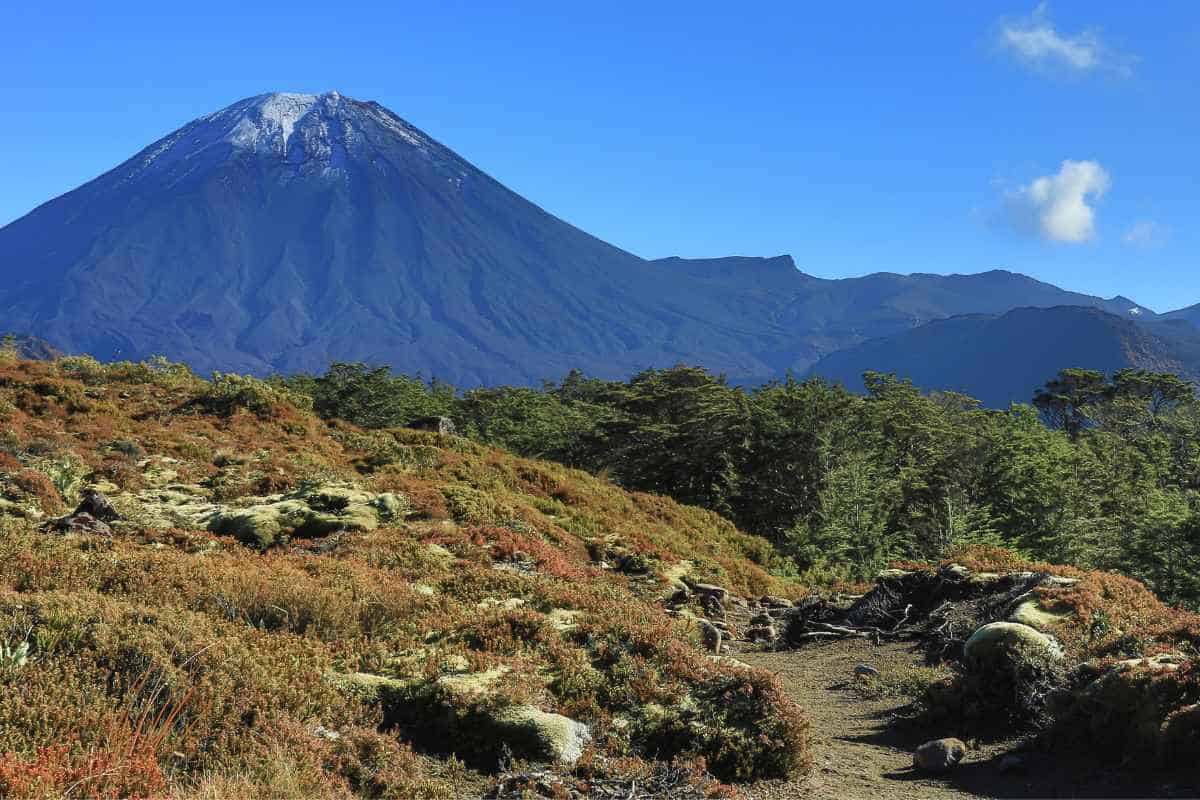The Tongariro Northern Circuit is a 26.7 miles (43-kilometer) trek that circumnavigates an active volcano in New Zealand’s Taupo Volcanic Zone.
It is a longer version of the famous Tongariro Alpine Crossing, which is one of New Zealand’s most walked day hikes. The full circuit also classifies as one of the 10 Great Walks in New Zealand.
The trek traverses through areas of volcanic activity, stunning emerald lakes, old lava flow, and several steam vents. It offers breathtaking views of the surrounding landscapes, including Mount Ngauruhoe, the most perfectly shaped volcanic cone within the Tongariro National Park.
Although currently dormant, Mount Ngauruhoe is New Zealand’s most active volcano with 61 eruptions since 1839.
The Tongariro Northern Circuit is a challenging yet rewarding trek that attracts thousands of visitors each year. It is a multi-day hike that requires proper planning, preparation, and equipment.
In this article, we will provide you with a comprehensive guide to trekking the Tongariro Northern Circuit, including everything you need to know before embarking on this adventure.
Overview
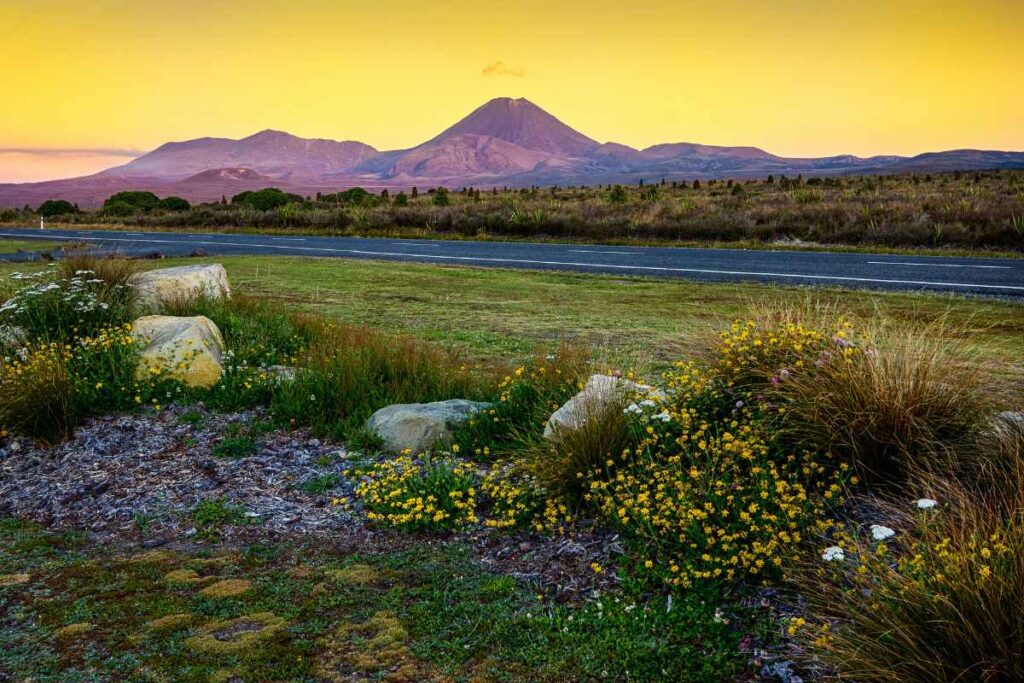
The Tongariro Northern Circuit is a 43km loop track located in the heart of the Tongariro National Park in New Zealand’s Taupo Volcanic Zone. The track is one of New Zealand’s Great Walks and offers stunning views of the volcanic landscapes, alpine meadows, and glacial valleys.
Location
The Tongariro Northern Circuit is located in the Tongariro National Park, which is situated in the central North Island of New Zealand. The park is home to three active volcanoes: Tongariro, Ngauruhoe, and Ruapehu, and is a UNESCO Dual World Heritage site for its cultural and natural significance.
Length and Difficulty
The Tongariro Northern Circuit is a 43km loop track that takes three to four days to complete. The track is rated as a moderate to difficult hike and requires a good level of fitness and experience.
The track includes steep ascents and descents, rocky terrain, and exposed ridges.
| Track Section | Distance | Estimated Time |
|---|---|---|
| Whakapapa Village to Mangatepopo Hut | 7.5km (4.66 miles) | 3-4 hours |
| Mangatepopo Hut to Oturere Hut | 16.5km (10.25 miles) | 6-8 hours |
| Oturere Hut to Waihohonu Hut | 8.5km (5.28 miles) | 3-5 hours |
| Waihohonu Hut to Whakapapa Village | 10.5km (6.52 miles) | 4-6 hours |
Best Time to Visit
The best time to visit the Tongariro Northern Circuit is from late October to April when the weather is generally more stable and the track is fully open.
During the winter months, the track can be closed due to snow and ice, and hikers require specialized equipment and experience. It is essential to check the weather forecast and track conditions before embarking on the hike.
Highlights
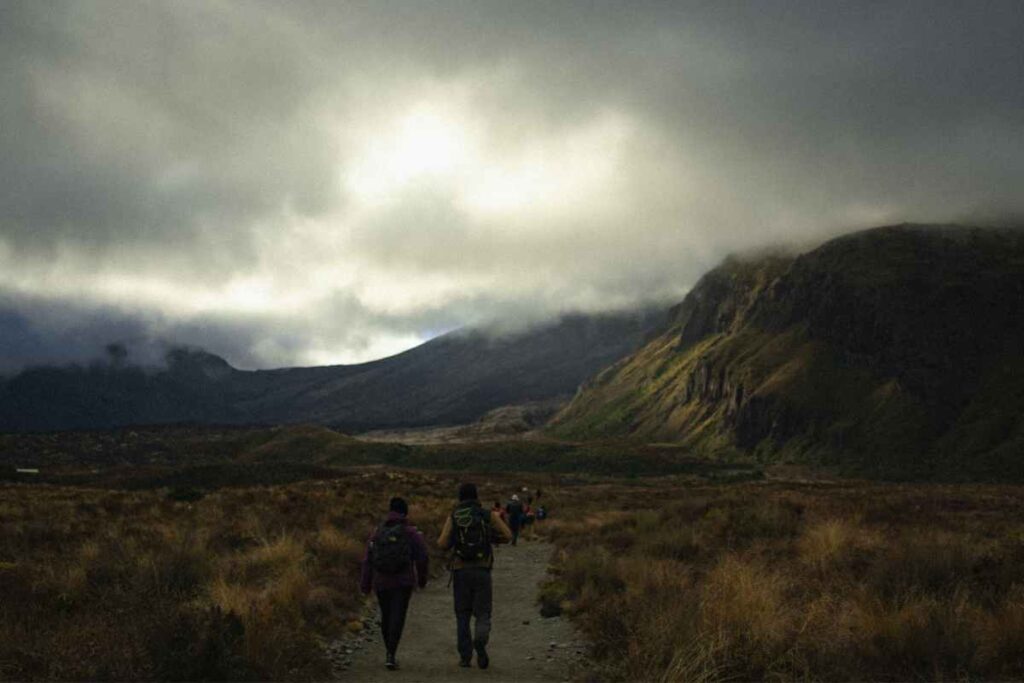
Landscape and Scenery
The Tongariro Northern Circuit is renowned for its stunning alpine scenery and picturesque landscapes. The hike takes you through a range of landscapes, from lush forests to open plains, and from crystal-clear streams to snow-capped peaks.
The highlight of the trek is the Emerald Lakes, which are a series of three stunningly beautiful, jewel-toned lakes that sit in the heart of the park.
Along the way, you will also come across several waterfalls, including the stunning Taranaki Falls, which is a 20-metre-high waterfall that is surrounded by lush vegetation.
Volcanic Features
The Tongariro Northern Circuit is set in the Taupo Volcanic Zone, which is home to some of the most active volcanoes in the world.
The hike takes you through a range of volcanic landscapes, including the Red Crater, which is an active volcano that last erupted in 1926. You will also come across several geothermal features, including steam vents, hot springs, and boiling mud pools.
Wildlife and Flora
The Tongariro Northern Circuit is home to a range of unique flora and fauna, including several endemic species. Along the way, you will come across several bird species, including the native Tui and Kea, as well as several species of lizards, including the native Tuatara.
The park is also home to several rare plant species, including the Tongariro buttercup, which is found nowhere else in the world.
The park is also home to several introduced species, including the Himalayan Tahr and the Australian Brushtail Possum. While these species are not native to the area, they have become an integral part of the park’s ecosystem and are now a common sight along the trail.
Logistics
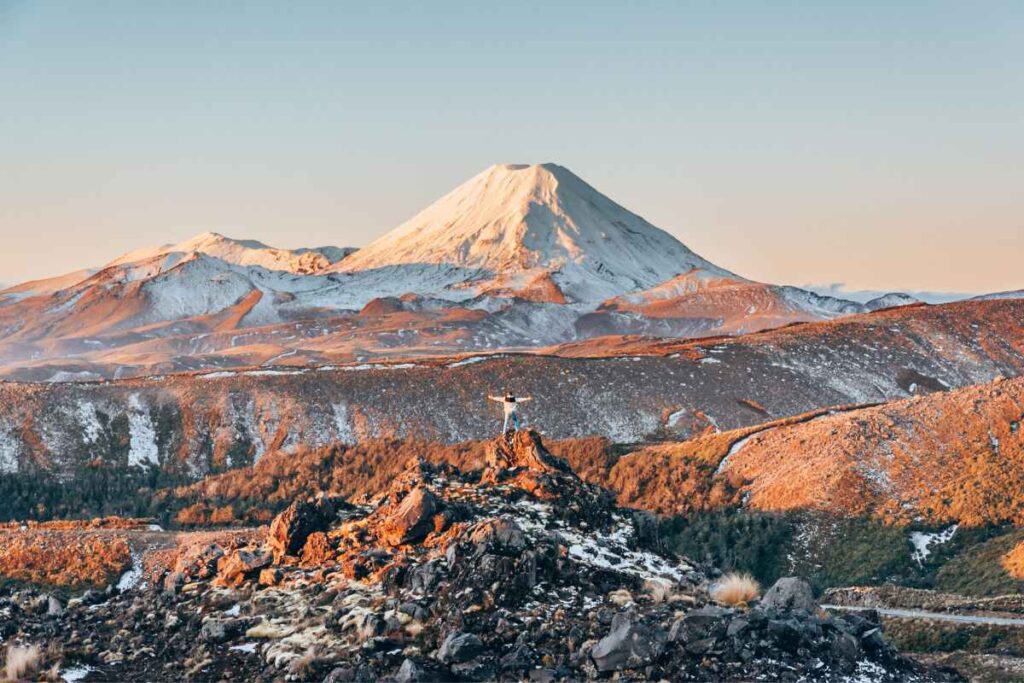
Getting There
The Tongariro Northern Circuit is located in the Tongariro National Park on the North Island of New Zealand. The closest towns are Turangi and National Park Village.
The most common way to reach the trailhead is by car, and there are several parking areas available. Some shuttle services are also available to transport hikers to the trailhead from nearby towns.
Permits and Fees
Hikers are required to purchase a Great Walks Pass to access the Tongariro Northern Circuit. The pass costs NZD 140 per person for adults and NZD 70 per person for children under 18 years old.
The pass includes hut accommodation and must be booked in advance through the Department of Conservation (DOC) website. Additional fees may apply for camping and transportation services.
Accommodation
There are four huts along the Tongariro Northern Circuit:
- Mangatepopo
- Oturere
- Waihohonu
- and Whakapapa
These huts are basic and provide bunk beds, cooking facilities, and toilets.
Hikers are required to bring their own sleeping bags, food, and cooking utensils. Camping is also allowed at designated campsites, but hikers must bring their own tents and camping equipment.
Food and Water
Hikers must bring their own food and cooking equipment as there are no food services available along the trail. Water sources are available at each hut and campsite, but hikers should bring their own water filtration system or boil water before drinking.
Trail Description
The Tongariro Northern Circuit is a 43-kilometer hike in the heart of Tongariro National Park. This stunning alpine walk encircles Mount Ngauruhoe, an active volcano, and offers breathtaking views of the surrounding landscape. The hike takes 3-4 days to complete and is considered an intermediate level hike.
Day 1: Whakapapa Village to Mangatepopo Valley
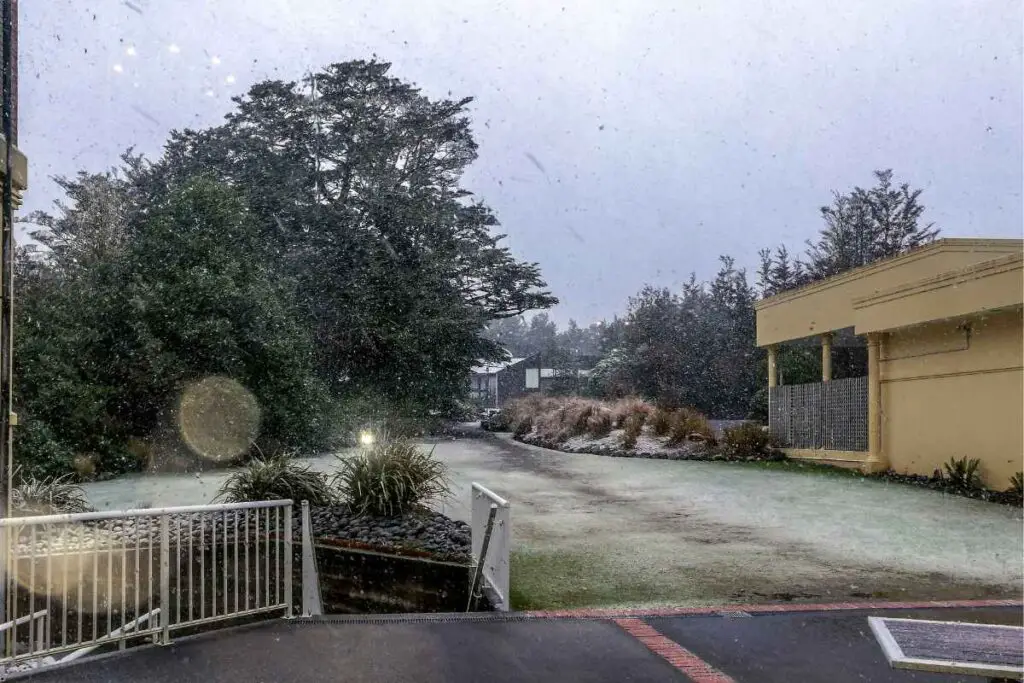
The first day of the hike covers 8.5 kilometers from Whakapapa Village to Mangatepopo Valley. The trail begins at an elevation of 1120 meters and gradually climbs to 1150 meters.
The hike takes around 3-4 hours and offers stunning views of the surrounding mountains and valleys.
- The first part of the trail is a gradual climb through tussock and shrubland.
- After about an hour, the trail enters a beech forest and descends to a stream.
- The trail then climbs again to the Mangatepopo Saddle, offering stunning views of Mount Ngauruhoe.
- The trail then descends into the Mangatepopo Valley and the Mangatepopo Hut, where hikers can spend the night.
Day 2: Mangatepopo Valley to Emerald Lakes
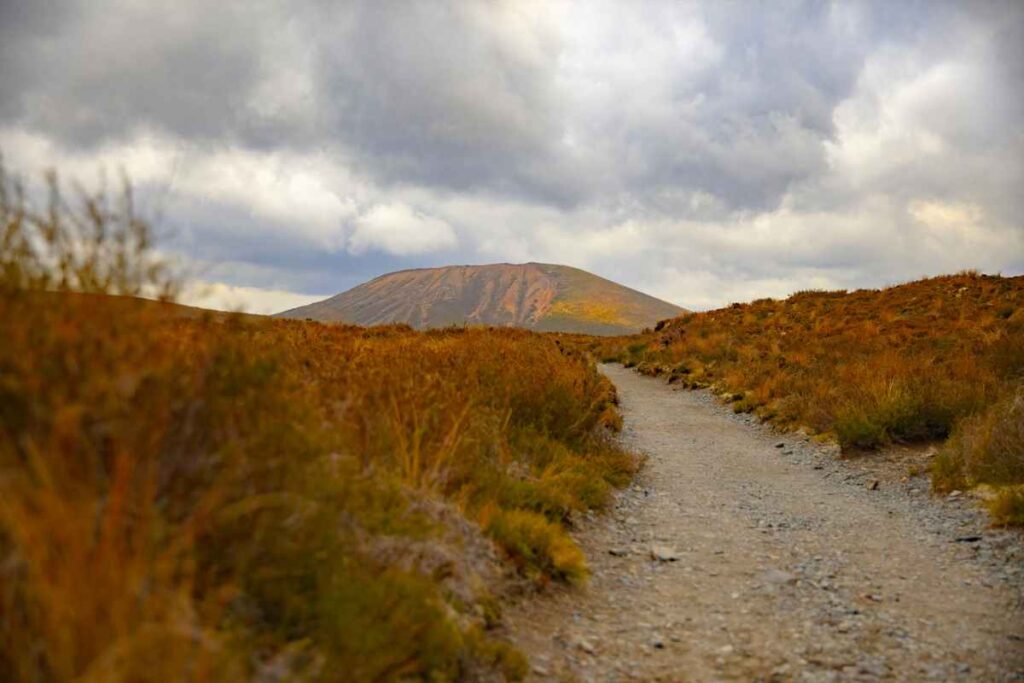
The second day of the hike covers 14 kilometers from Mangatepopo Valley to Emerald Lakes. The trail begins at an elevation of 1100 meters and climbs to 1886 meters at the Red Crater.
The hike takes around 6-8 hours and offers stunning views of the surrounding volcanic landscape.
- The first part of the trail is a gradual climb through the Mangatepopo Valley.
- The trail then climbs steeply to the South Crater, offering stunning views of Mount Tongariro and Mount Ngauruhoe.
- The trail then climbs again to the Red Crater, the highest point on the hike, offering stunning views of the surrounding volcanic landscape.
- The trail then descends to the Emerald Lakes, where hikers can spend the night at the Emerald Lakes Hut.
Day 3: Emerald Lakes to Ketetahi Car Park
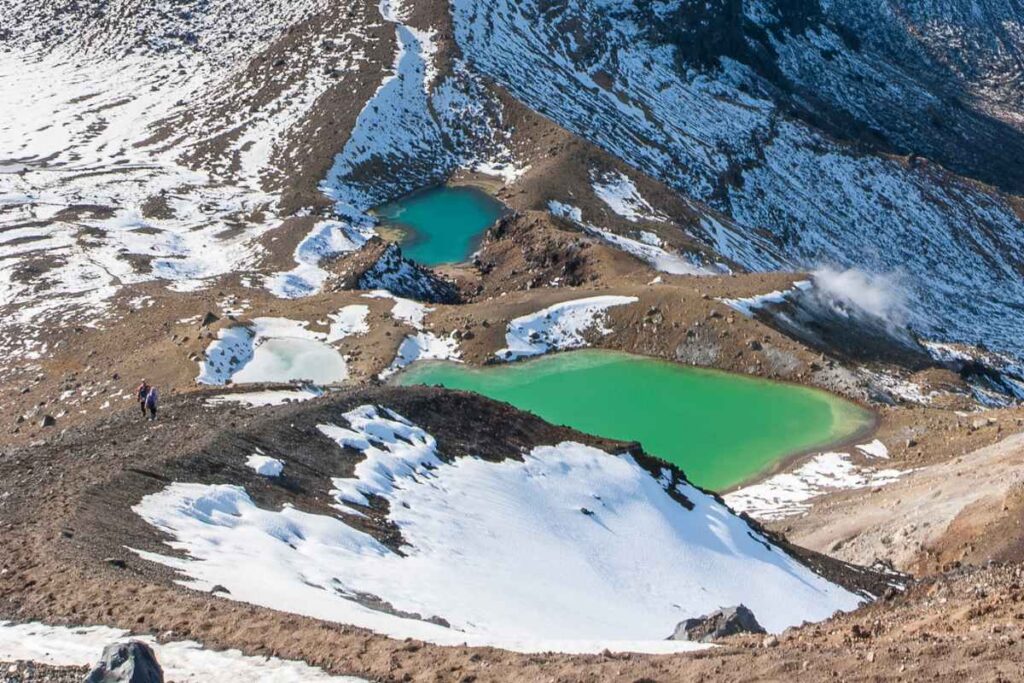
The third day of the hike covers 20 kilometers from Emerald Lakes to Ketetahi Car Park. The trail begins at an elevation of 1400 meters and descends to 600 meters at the Ketetahi Car Park.
The hike takes around 6-8 hours and offers stunning views of the surrounding landscape.
- The first part of the trail is a gradual descent through the Central Crater.
- The trail then descends steeply to the Ketetahi Hut, offering stunning views of Lake Rotoaira.
- The trail then descends through tussock and shrubland to the Ketetahi Car Park.
Tips and Safety
What to Bring
When hiking the Tongariro Northern Circuit, it’s important to pack appropriately.
Here are some essential items to bring:
- Sturdy hiking boots
- Warm and waterproof clothing
- Sunscreen and sunglasses
- A hat and gloves
- A first aid kit
- A map and compass
- Food and water
- A headlamp or flashlight
- A multi-purpose tool or knife
Weather and Conditions
The weather on the Tongariro Northern Circuit can change quickly and unexpectedly. It’s important to check the forecast before you start your hike and be prepared for all conditions.
The trail can be steep and rocky in places, so it’s important to wear sturdy hiking boots and take your time on difficult sections. If you’re not an experienced hiker, consider hiring a guide or joining a tour group.
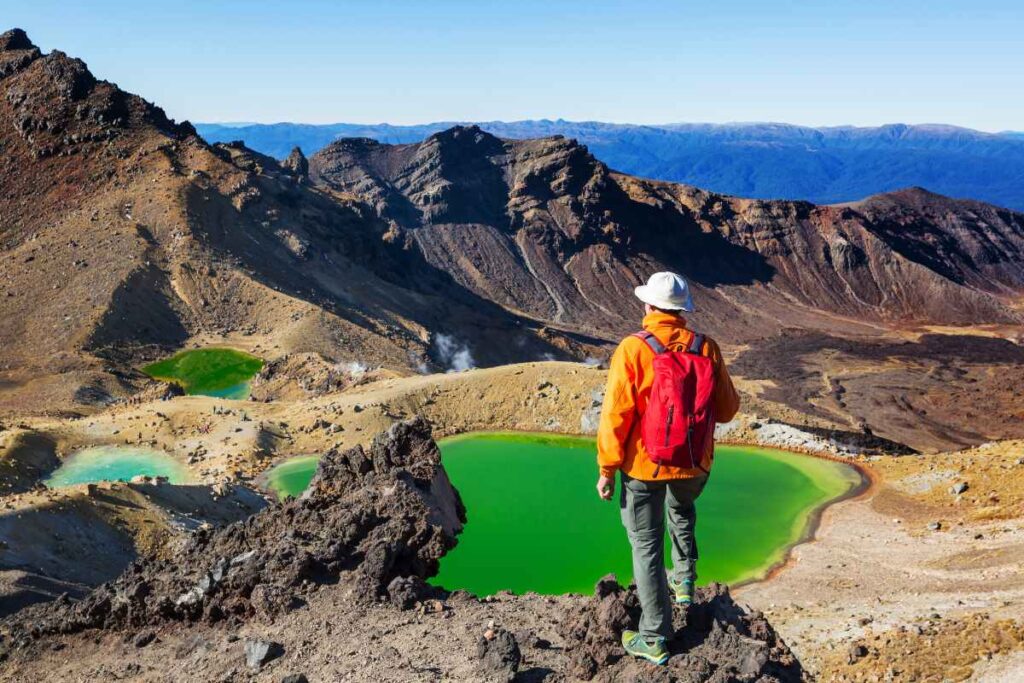
Trail Etiquette
When hiking the Tongariro Northern Circuit, it’s important to be respectful of other hikers and the environment.
Here are some tips:
- Stay on the trail and don’t cut switchbacks
- Pack out all trash and leave no trace
- Yield to uphill hikers and give way to faster hikers
- Don’t disturb wildlife or plant life
- Respect private property and stay on public land
Emergency Procedures
If you get lost or injured on the Tongariro Northern Circuit, it’s important to know what to do.
Here are some emergency procedures:
- If you get lost, stay calm and retrace your steps
- If you’re injured, seek shelter and administer first aid
- If you need help, use your cell phone or emergency beacon
- If you encounter someone who is lost or injured, offer assistance and report the incident to park officials
